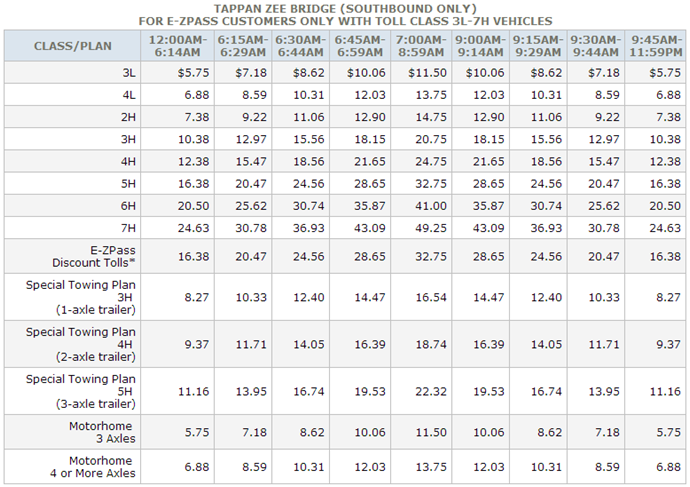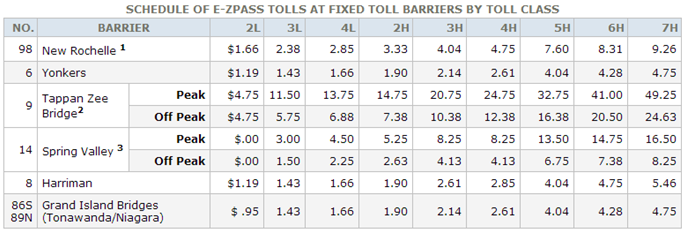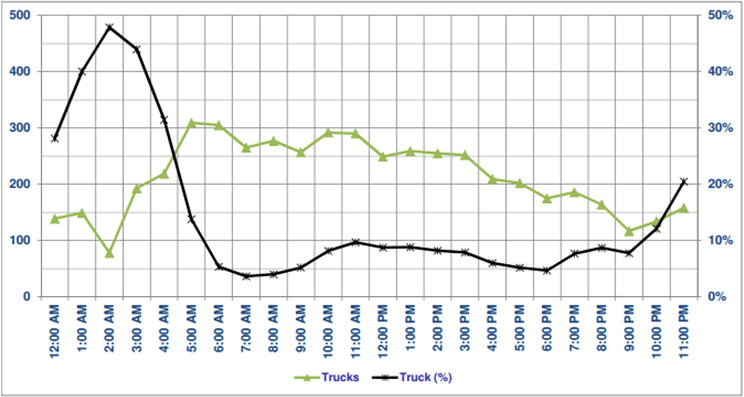As the Tappan Zee Bridge replacement project sails along, a recent letter in The Journal News called for free crossings for motorists between the off-peak hours from 1 to 5 a.m., to encourage drivers, especially commercial drivers, to travel when there is presumably less congestion.
While the goal to shift vehicles to off-peak hours as a way to reduce congestion has been proven successful in the area, around the country and internationally, with research even showing that non-work travel constitutes up to 56 percent of trips during the a.m. peak travel period and 69 percent of trips during the p.m. peak, the author’s proposed traffic solution misses the mark. The problem here is twofold: First, according the NYSTA’s own consultants, trucks already are not paying their fair share. According to one report, road damage caused by a single 18-wheeler is equivalent to that of 9,600 cars, yet trucks pay “only five times the rate of the average passenger vehicle,” according to NYSTA Executive Director Tom Madison. By some calculations, trucks cause up to 99 percent of all road damage.
Second, the existing Tappan Zee Bridge already has a variable tolling plan that provides trucks as much as 50 percent off the normal toll:

In fact, there is variable tolling for commercial E-ZPass tag holders at several of the Thruway’s fixed toll barriers:

However, there currently is no similar variable pricing for cash tolls:

Based on traffic data showing the relative numbers of all vehicles on the road throughout a given day, there seems to be some amount of incentive for commercial traffic to avoid using the bridge during peak hours already in place:


But the impact is limited. For example, large truck (5H) traffic is lower during the peak but not by much.
A better plan would be to implement all-electronic tolling, thereby extending the variable pricing framework to all commercial traffic. This would provide a real financial incentive for moving operations to off-peak hours and would help to achieve the author’s desired result — but without giving vehicles that cause the most damage a free ride. NYSTA officials should also consider going further and making all vehicles – including cars – subject to variable tolling. This tactic is not without precedent, both as noted above and even on other New York-area crossings.
The best first step in a strategy to reduce congestion on the New NY Bridge and in the I-287 Corridor, however, would be for the State and Thruway Authority to implement the Governor’s Mass Transit Task Force recommendations and analyze the implementation of dedicated bus lanes running the lengths of the proposed routes.
Traffic congestion will only be alleviated through variable pricing and alternatives to driving. Giving free rides for big trucks is not a solution, but rather a step in the wrong direction, and one that puts the burden on all New York taxpayers.

Good analysis! This means that truck rates should be increased for all hours, except maybe for the 11 pm to 5 am period when there is excess capacity.
At those hours there may be ‘excess capacity’ and free-flow for all traffic but the people of NY are providing a valued service to these private vendors. They travel at those hours not because it is toll-cheap but their scheduled deliveries are premised on crossing at that time. We could just close the bridge at night, as is done with various mass transit systems. This service demands a payment.